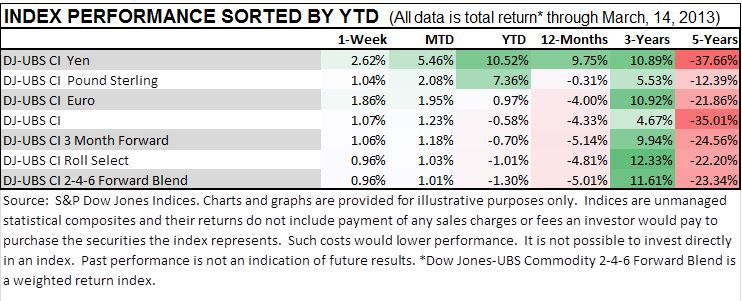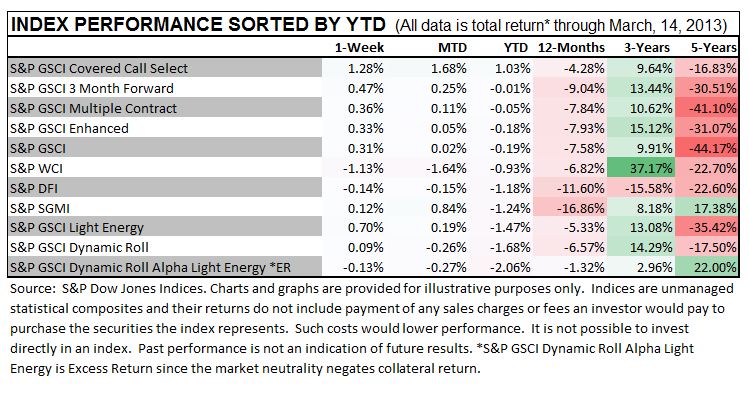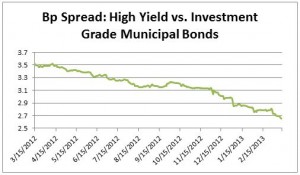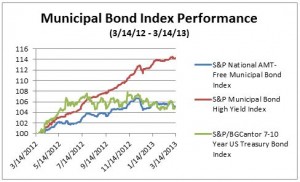The DJ-UBS CI Energy Subindex is the best performing sector in the index, up 2.2% this week contributing to a 3.2% MTD return and 4.0% YTD return. Although the International Energy Agency’s (IEA) projection of 820 kb/d annual growth in global oil demand for 2013 is less than the 1.4 mb/d growth average for non-recessionary years from sluggish economic signals, the DJ-UBS CI Natural Gas, gained 6.1% this week, bringing the month’s return to 9.0% and YTD to 9.9%. The Energy Information Administration (IEA) reported a drop in U.S. inventories that was bigger than expected based on cold weather and above-average nuclear power plant outages, which kept the momentum to the upside.
Driven by solid mill buying and U.S. exports, the DJ-UBS CI Cotton gained 5.0% this week, bringing its YTD return up to 19.5%. It is the best performing commodity in the index this year. The U.S. Department of Agriculture (USDA) has forecast a record global surplus, but most of those reserves are expected to be within China’s stockpiles and unavailable to the global marketplace. The International Cotton Advisory Committee (ICAC) stated China’s cotton reserve has continued to expand at “a ferocious rate” and is projected to reach 8 million metric tons (36.74 million bales) by the end of the 2012-13 marketing year.
The DJ-UBS CI Corn and DJ-UBS CI Wheat have also been strong performers recently. A weaker U.S. dollar supported both of these grains but the DJ-UBS CI Corn, up 3.7% for the week and 1.9% MTD, was driven by tight old-crop supplies, while the DJ-UBS CI Wheat rose 4.2% this week and 1.4% MTD, driven by high demand from livestock feeders.
The posts on this blog are opinions, not advice. Please read our Disclaimers.














































